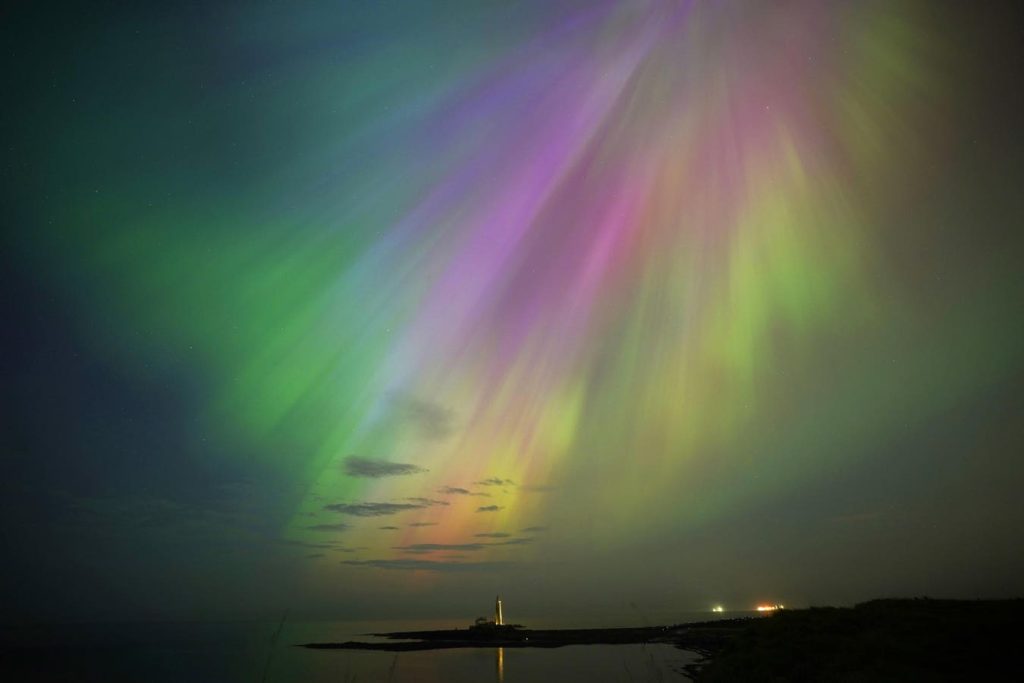The aurora borealis and aurora australis, also known as the northern and southern lights, were visible across the world last night in a rare display caused by a strong geomagnetic storm. The event was the result of several coronal mass ejections from the sun that all came in the direction of Earth and combined as they traveled, causing a G4 geomagnetic storm. This phenomenon was called a “halo CME” and led to spectacular displays of colorful aurora in regions such as Europe and North America.
The aurora are caused by charged particles from the sun, also known as the solar wind, being accelerated down the Earth’s magnetic field lines and interacting with molecules in the ionosphere. The green lights in the aurora are caused by collisions with oxygen molecules, while other colors are produced by interactions with nitrogen molecules. In last night’s event, many parts of Europe and North America were treated to rare sightings of red and even blue aurora, adding to the spectacular display.
The timing of this geomagnetic storm coincides with the sun reaching its “solar maximum,” which is the peak of its magnetic activity in an approximately 11-year solar cycle. While the aurora typically have a season, with the northern lights generally visible from September through March and the southern lights from March through September, they can occur all year round. The reason for the seasonal differences is primarily due to darkness levels and the availability of nighttime viewing conditions.
In regions where the aurora were visible last night, such as the U.K. and the U.S., people were advised to get away from light pollution in order to get the best view of the displays. Capturing the aurora on camera often enhances the colors and shapes of the lights, as cameras can take long exposures that the naked eye may not pick up. For those interested in seeing the aurora in person, the best places to do so are typically in the northern regions near the Arctic Circle, such as Alaska, Canada, Iceland, Greenland, and northern Europe.
As the geomagnetic storm may continue throughout the weekend, astronomers and skywatchers are encouraged to use resources like the Dark Sky Place finder or light pollution maps to find optimal viewing locations. The natural beauty of the aurora is a reminder of the wonders of our solar system and the interactions between the sun and Earth’s magnetic field. The rare occurrence of such a strong and widespread aurora event is a special treat for those lucky enough to witness it, and serves as a reminder of the value of preserving and appreciating the natural world.













